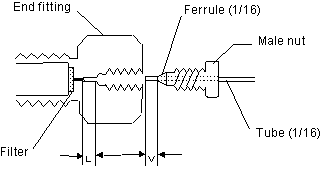- HOME
- Products
- HPLC Columns
- Reduction column User's Manual
|
|
|
|
|
|
|
|
|
|
|
|
Reduction column User's Manual |
|
|
|
|
|
Osaka Soda reduction column is a novel quinine derivatization HPLC column, developed by exchange quinine to hydroquinone with high recovery via catalytic reduction method. |
|
1. Handling the Column
|
|
|
|
|
|
|
|
|
2. Attaching the Column
|
|
|
|
|
|
|
|
|
3. Analysis
|
|
|
|
|
3-1. Mobile Phase
|
|
|
|
|
|
|
3-2. Preparing a Sample Solution
|
|
|
|
|
|
|
3-3. Notes on Analysis
|
|
||||||||||||||||
|
|
4. Storing the Column
|
|
|
|
|
|
|
|
|
5. End Fittings
|
|
|
|
|
|
|
|
|
|
|
Osaka Soda reduction column is shipped after a strict performance check. However, if you should find any defect, please contact your dealer or Osaka Soda for replacement. Note that Osaka Soda does not warrant the product against column life or deterioration caused by the failure to follow the above handling instructions. Ten or more days after reception by the customer, Osaka Soda will assume that the product was delivered in good condition, and will not accept a later replacement request. |
| 2008 / 10 / 1 |


